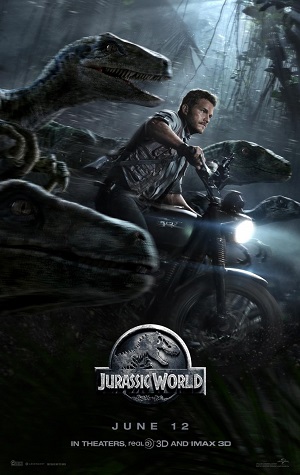Real Jurassic World not far from reality?
June 9, 2015
Jurassic World, the fourth installment in the successful film series, in theaters June 12, will take viewers back to a world in which dinosaurs have been revived.
It’s not just be a movie, says Andrew Torrance, professor at the University of Kansas School of Law. We are close to “de-extinction” — reviving extinct creatures, he suggests.
While dinosaur fossils are too old and contain too little usable DNA, extinct creatures such as woolly mammoths, saber-toothed tigers, passenger pigeons and even the iconic dodo could be revived in the near term.
“A decade ago, a group of researchers in Spain successfully resurrected a bucardo, a recently extinct Iberian ibex. Sadly, the baby bucardo died hours after its birth due to lung complications,” Torrance said.
“However, this established that de-extinction via cloning is technically feasible. Over the ensuing ten years, advances in biological science have offered several new methods by which extinct organisms might be revived more easily and accurately.”
Most prominent among these is a technique called CRISPR, or gene editing, which is capable of precisely altering the genetic sequence of living organisms’ genomes to transform their genomes into genomes matching extinct relatives.
“Using CRISPR, it is likely that approximations of extinct organisms, like Steller sea cows, Tasmanian wolves and giant moas could be created within the next few years,” he says. “High-fidelity copies of extinct organisms remain a more distant possibility, but with the breakneck speed at which biotechnology is improving, the first of these could be born within the next decade.”
Thorny legal and ethical issues
That raises ethical questions. Everything from how revived species would affect current ecosystems to which nations would house revived creatures, to who would be liable for damage such animals caused should be addressed, he says — preferably prior to revival and release.
There is already a large body of law surrounding the acceptable practices and uses of biotechnology, the treatment and protection of endangered species, the regulation of non-native and potentially invasive organisms and the ownership of and liability for genetically engineered organisms, Torrance notes.
“These are likely to apply to de-extinct organisms as soon as they exist in flesh and blood. In addition, any special threats or challenges that arise as a result of resurrected organisms are certain to spur new legal responses. Like any technology, however, it is important that the law regulate de-extinction carefully and wisely, so that its benefits are considered alongside its costs and risks.
“If anything, the realities of de-extinction will be far more exciting than anything Hollywood can yet conceive, so society must be ready and able to ensure that such excitement is channeled in a positive direction.”
Universal Pictures | Jurassic World — Official Trailer
